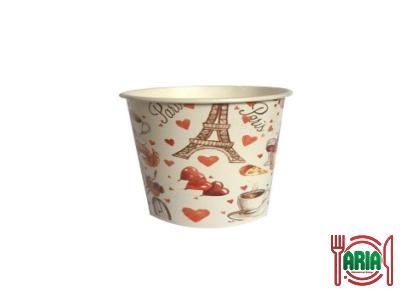Plastics are by far the most common material used to make end-use parts and products like the spoon packet, with a proper manufacturing process.
Plastics are versatile type of materials that comes in thousands of different polymer types, each of which has its own set of mechanical properties.
Plastic can now be made using a wide range of methods, each of which can be used with a different set of materials, component shapes, and applications.
Any designer or engineer working on product development needs to know about the different ways to make things now and how they might be made in the future.

This article will give you an overview of the most common ways to make plastic parts, as well as tips to help you choose the best one for your needs. How to figure out which method of making plastic is best for you
When picking a method for making your product, you should think about the following things. Are the tolerance requirements for your parts very strict, or do the insides of your parts have a lot of detail?
A design’s geometry may limit how it can be made, or it may need a lot of design for manufacturing (DFM) optimization before it can be made economically.
How many do you think you will make all together, or how many do you think you will make each year? Several ways of making things require a lot of money upfront for tools and setup, but the finished products are usually not too expensive per unit.
Cheap volume manufacturing methods, on the other hand, have low start-up costs.
However, because they have shorter cycle times, less automation, and more human labor, the cost per component stays the same or only goes down slightly as the volume goes up. How quickly do you need the finished products or the parts to be made?
In some high-volume manufacturing processes, the first pieces are made in less than 24 hours, but in others, the tools and set-up take several months.
What kinds of challenges and pressures will your product have to be able to handle? There are a lot of different factors that affect which material is best for a certain use.
It is important to find a good balance between how much something costs and how well it works and looks.
Think about the features that would be best for your use, and then compare them to the options available during the production process.
There are hundreds of different kinds of plastic, and each one has its basic chemistry, byproducts, and additives.

These parts can be put together in many different ways to make a wide range of beautiful and useful things.
Let’s start by looking at the two main types of plastic: thermoplastics and thermosets. This will make it easier to figure out which type of plastic is best for a certain part or product.
The most common kind of plastic, which is also the most useful, is thermoplastic. The main difference between thermoplastics and thermosets is that thermoplastics can go through repeated melting and solidification processes without losing much of their quality.
Most of the time, thermoplastics are sold in the form of small pellets or sheets that, when heated, can be shaped into the right shape in several ways.
The process of recycling thermoplastics doesn’t involve any chemical bonds, so they can be melted down and used again or melted down and then used again.
Here are some common examples of thermoplastic materials:
Acrylic, also known as polymethylmethacrylate (PMMA) (PMMA)
Styrene, acrylonitrile, and butadiene make up a chemical compound (ABS)
- Polyamide (PA) (PA)
- Acide de polylactate (PLA)
- Polycarbonate, or “PC” (PC)
For short, PEEK. Polymethyl ether ketone (PEEK)
- Polyethylene (PE) (PE)
- Polypropylene (PP) (PP)
- Polyvinyl chloride (PVC)

Plastics that get tough when they get hot
In contrast to thermoplastics, thermosetting plastics, also called thermosets, do not go back to a liquid state after they have hardened. Instead, they stay solid forever.
The polymers that make up thermosetting materials link up during the curing process, which is caused by heat, light, or other forms of radiation. During this curing process, a chemical bond is made that can’t be broken.
Plastics that don’t melt when heated will break apart instead of melting, so they won’t come back together after being cooled. Thermosets can’t be recycled, and they can’t be broken down into their parts.
Injection molding is one of the most common ways that plastic parts are made. To start injection molding, plastic pellets are put into the hopper, which then puts the pellets into the barrel. The first step in the process is this.
The barrel is heated, and it may have a ram injector or a screw that turns back and forth. A reciprocating screw is something that is often used in machines that make small parts.
The turning screw breaks up the pellets, which makes it easier to turn the plastic into a liquid. A screw that moves back and forth moves the molten plastic toward the front of the barrel. This moves the molten plastic into an empty mold.
The nozzle is in the front part of the barrel. In contrast to the barrel, the mold is kept cold so that the plastic can be shaped into whatever shape is needed without melting.
The mold plates stay in place because of a large plate (referred to as a movable plate).

A hydraulic piston connected to a moveable platen puts pressure on the mold. By putting clamps on the mold, you can stop plastic from leaking out and making mistakes in the final products.
A process called “extrusion molding” can also be used to make plastic parts. Extrusion molding, which is similar to injection molding and is used to make these things, can be used to make pipes, tubes, straws, hoses, and other hollow things.
Plastic resin is melted in a barrel, which is then used to fill the barrel. A turning screw pushes melted plastic into a mold with a tube-shaped hole.
The size and shape of the tube are used to figure out how big the plastic part needs to be. After the molten plastic has had a chance to cool, it is put through an extruder. This flattens the plastic and gives the final product its shape.
During the process of making plastic, several problems could happen, such as burned parts, deformations, surface flaws, and brittle parts.
The parts burn because either the molds were not kept at a cool enough temperature or the melting temperature in the barrel was too high.
Also, if the reciprocating screw gets stuck or doesn’t turn fast enough, the liquid resin will stay in the barrel for too long, which will cause it to burn.
When the surface temperature of the mold is not even, when the molds are not clamped tightly enough, or when the melting temperature is too high, surface flaws and deformities may appear.
Pieces that are too hard to break are made when not enough liquid resin is poured into the mold or when the plastic hardens before the mold can be filled. This can also happen if the mold is not filled with enough resin.
To make sure the operation goes off without a hitch, it’s important to check and adjust the injection and extrusion molding equipment regularly.
Wholesale pricing for plastic spoons is reasonable and less expensive than retail prices, thus the majority of people choose to purchase them this way.

The most influential factors on the price of a plastic spoon are quality and material, followed by brands and firms that manufacture them, trading techniques, changes in the market’s economics, and dimensions.
Quote. The container’s dimensions and Even if a buyer purchases low-priced, low-quality goods, they may not be satisfied with them.
On the other side, utilizing and damaging this merchandise too quickly may make your shop infamous and disreputable in the eyes of these clients.
This issue does not apply to all inexpensive things; thus, this is how it should be seen, regardless of whether the inexpensive products are of worse quality or the sellers earn less money.
Not because everyone has different interests, but because high-end things survive longer and can be used more often than low-end ones, some individuals seek them out.




